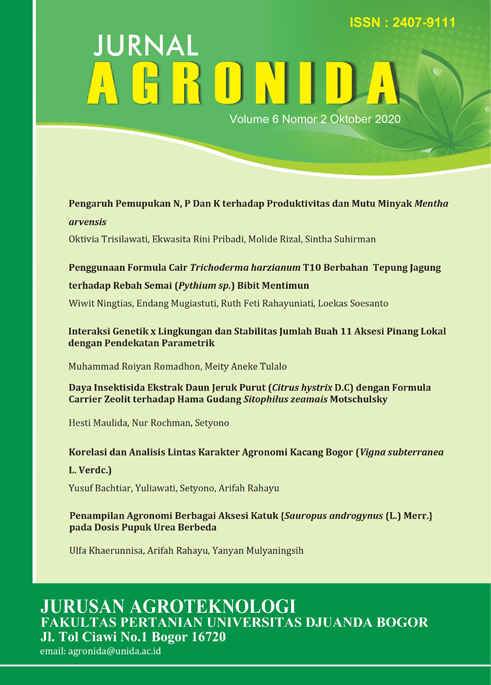Main Article Content
Abstract
Selection is choosing the good or discarding the bad. The selection index is one of the selection procedures in the plant breeding program when it involves many characters. In this study we used experimental data resulted by split plot design involving 30 maize genotypes planted in 3 environments with 3 replications, so that in each response variable there were 270 observation units. From the 30 genotypes, selection performed using an index of 4 characters with unweighted index methods (equal weight) and weighted index method (different weight), to obtain 5 genotypes with the largest index. The parameters studied include the population average, selection average, selection differential, genetic gain/cycle, and percent genetic gain/ cycle of each response variable. The results of the study showed that both methods always give positive progress on the character chosen as selection criteria, but not necessarily give positive progress to other characters. In practice the selection in the field we should consider the heritability.
Keywords: index selection, selection differential, genetic gain / cycle, heritability
